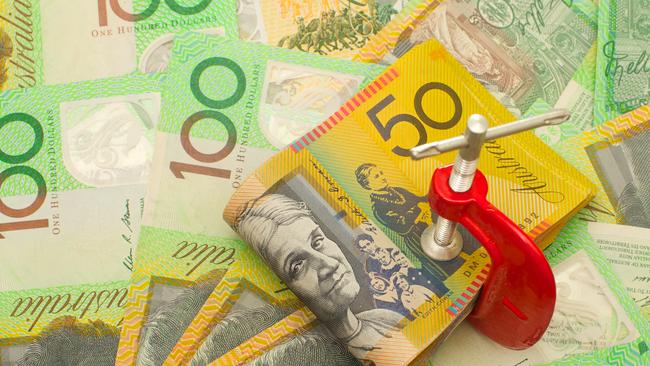Lending to businesses shrinks in June: RBA
Lending to home borrowers has hit a new low and the amount loaned to firms shrank for the first time in over two years.

Lending to Australian home borrowers has tumbled to a new record low, according to fresh data that reveals business credit growth contracted for the first time in more than two years.
The concerning figures underscore the government’s attempt to kickstart the economy after the federal election with a suite of personal income tax cuts, infrastructure programs and a new “go easy” approach to banking regulation.
According to new lending figures from the Reserve Bank and the Australian Prudential Regulation Authority, annual credit growth slowed to 3.5 per cent in June, down from 3.7 per cent the prior month and the slowest rate on record.
The banking sector is currently mounting a campaign that a looming regulatory crackdown on irresponsible lending in the wake of the royal commission is to blame for the contraction in credit growth.
Westpac chief executive Brian Hartzer on Tuesday said the clampdown would have meant that Kerry Stokes, a Westpac customer, may not receive a loan in today’s environment, compared to decades ago when he was ramping up his business interests
However, the slowing rate of lending has occurred progressively over for a number of years and has coincided with a steep increase in house prices.
While credit growth for home loans is currently 3.7 per cent, the figure has shrunk from each year starting from 6.6 per cent in 2015, to 5.6 per cent the following year, then 4.8 per cent. Last year it had slowed to 4.3 per cent.
Business lending, which is highly dependent on the health of the housing market as properties are used as collateral, shrunk 0.1 per cent in June, following flat results in May and April. That was the first contraction for business credit in 30 months, taking annual growth in business lending to 4 per cent, down from an annual rate of 4.5 per cent in May.
Over the three months to June, business credit growth logged its worst result since mid-2011, when activity was still contracting following the global financial crisis.
“Loans extended to buy Aussie homes are growing at the slowest pace for more than 40 years,” CommSec senior economist Ryan Felsman said.
“But property market conditions have improved since the federal election. Policymakers have acted to stabilise the market after two years of falling home prices. While housing credit growth remains weak, we expect a modest but gradual recovery in the property market to eventually support loan demand,” he said.
Westpac economist Andrew Hanlan said business credit hit a flat spot, impacted by additional uncertainty around the time of the federal election.
“This mirrors the experience of the July 2016 federal election. With the election now behind us, lending is likely to rebound,” Mr Hanlan said.
Due to years of holding back partial amounts of Reserve Bank rate reductions to support their own profits, the difference between the cash rate and the standard variable mortgage interest rate offered by the major banks has risen to a 25-year high of 3.94 percentage points.
The same has happened to interest rates offered to small business borrowers, where the margin over interest rates has surged to close to 400 basis points.
According to research by UBS, Australia’s biggest banks have “rarely been more profitable” than now and the sector’s habit of squeezing customers to deliver outsized returns for shareholders could “inhibit” the RBA’s attempt to revive the economy with rate cuts.
The RBA cut interest rates twice over June and July, slicing 50 basis points off the cash rate, but Commonwealth Bank and NAB reduced their standard variable mortgage rates by only 0.44 percentage points, ANZ dropped its rate by 0.43 percentage points while Westpac held back the most, lowering its rate by just 0.4 percentage points.



To join the conversation, please log in. Don't have an account? Register
Join the conversation, you are commenting as Logout